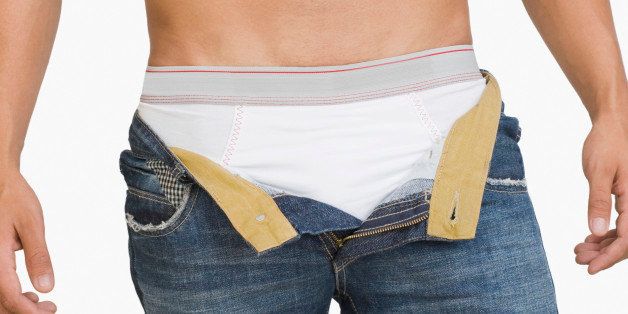
I was a 17-year-old high-school senior and was about to go on my first date with a college football player I'd met on MySpace. Having been raised in Mississippi, I was the personification of the statewide statistics on childhood obesity. His athletic figure seemed immune to that issue. He offered to buy me dinner, and I declined... as I declined every meal for the next week.
With no real gay role model in my life, I was a prisoner to pop culture's stereotypical depictions of what it meant to be a young gay man. According to Queer as Folk, I should have been a fit teen going to gay clubs and having sex with older men. According to Will and Grace, I should have been on the track to become a fit successful lawyer, or at least his fit, flamboyant comedic relief of a best friend. And according to the barely premiered first season of Glee, I should have been born with the fashion sense of a peacock and the metabolism of a gymnast.
My first real-life, up-close glimpse of this insane standard for the gay male physique was at a bar in New Orleans. Nineteen years old, I loved that no bar on Bourbon Street carded. I had seen a hot body before, but watching numerous men throw dollar bills at the go-go boys swaying from one end of the bar to the other gave me an idea of just how much gay men value youth and beauty. Although I did not want to use my minimum wage to stuff the dancers' G-strings, I envied their natural ability to grasp the attention of the room. I realized that beauty and a good body came with a lot of power.
Low self-esteem is not a foreign concept to young adults. Teenage girls have been sticking their fingers down their throats since calories were invented. But the women of pop culture have made strides toward giving these young ladies the confidence to be comfortable with their bodies. In the past year alone Lena Dunham, Mindy Kaling and Melissa McCarthy have graced the covers of fashion's most prominent publications.
Yes, pop culture has introduced realistically sized gay men to society. Modern Family proves that chubby gay men can be just as funny as fit gay men. Glee showed how horrifying being gay in high school is, on top of how uncomfortable being fat in a gay bar can be. And Happy Endings? To be honest, I sometimes forgot that show even had a gay character.
But if Lena Dunham's Twitter account can be adapted into an HBO series, when can we expect plus-sized gay men to become an onscreen norm without succumbing to a borderline offensive stereotype?
As much as the gay community glorifies twinks, it is a wonder that we strive for diversity and acceptance. It is hard enough being classified as the gay kid in high school. Then the gay community has to decide whether to label you as the twink, the jock or the otter.
"Flaws make a person" may have been some of the most progressive words I have heard from another gay man. Ironically enough, it was during a date with a young plastic surgeon.
Society places the pressure on young women to be thin and beautiful. It is very similar to the mindset that holds the way we all live to heteronormative standards. If gay men have to deal with that oppression, why oppress even more members of our own community based on something so superficial?